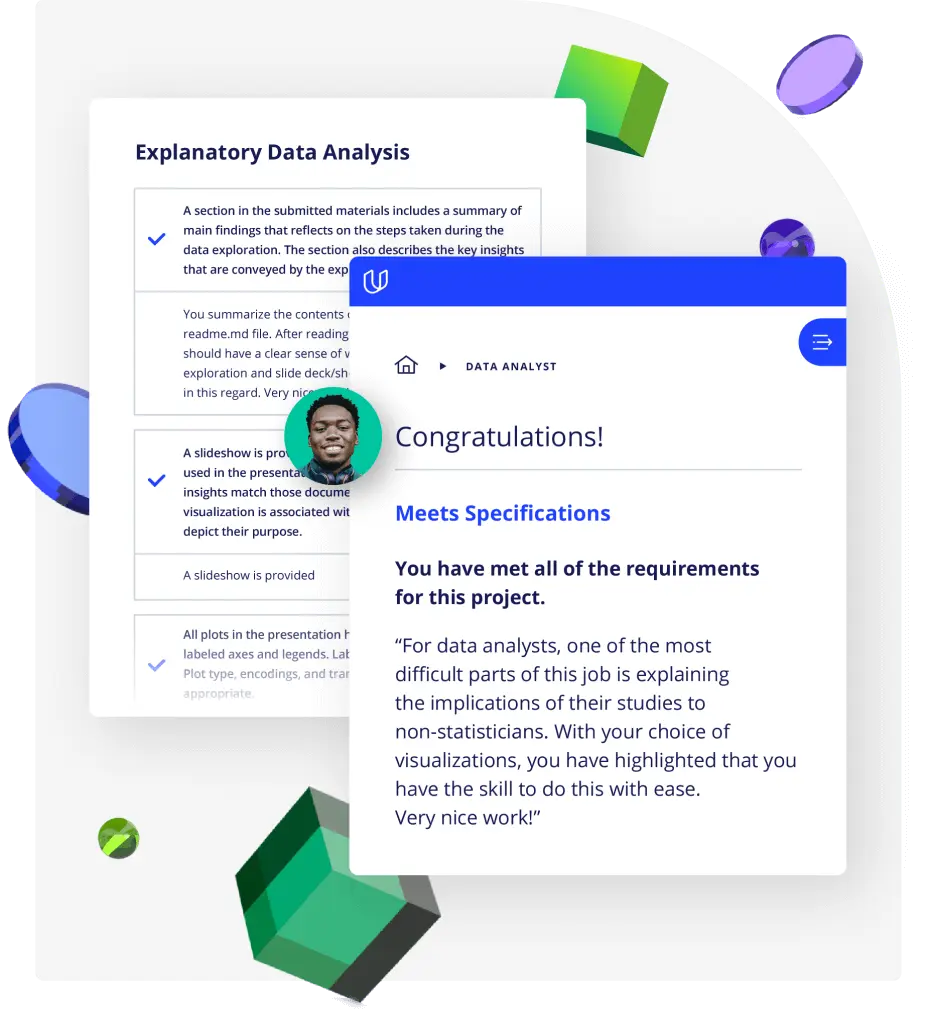Lesson 1
Introduction to Supervised Learning
Before diving into the many algorithms of machine learning, it is important to take a step back and understand the big picture associated with the entire field.

Course
In this course, you'll learn about different types of supervised learning and how to use them to solve real-world problems.
In this course, you'll learn about different types of supervised learning and how to use them to solve real-world problems.
Built in collaboration with
Kaggle
Intermediate
3 weeks
Real-world Projects
Completion Certificate
Last Updated March 18, 2024
Lesson 1
Before diving into the many algorithms of machine learning, it is important to take a step back and understand the big picture associated with the entire field.
Lesson 2
Linear regression is one of the most fundamental algorithms in machine learning. In this lesson, learn how linear regression works!
Lesson 3
The perceptron algorithm is an algorithm for classifying data. It is the building block of neural networks.
Lesson 4
Decision trees are a structure for decision-making where each decision leads to a set of consequences or additional decisions.
Lesson 5
Naive Bayesian Algorithms are powerful tools for creating classifiers for incoming labeled data. Specifically Naive Bayes is frequently used with text data and classification problems.
Lesson 6
Support vector machines are a common method used for classification problems. They have been proven effective using what is known as the 'kernel' trick!
Lesson 7
Bagging and boosting are two common ensemble methods for combining simple algorithms to make more advanced models that work better than the simple algorithms would on their own.
Lesson 8
Learn the main metrics to evaluate models, such as accuracy, precision, recall, and more!
Lesson 9
Learn the main types of errors that can occur during training, and several methods to deal with them and optimize your machine learning models.
Lesson 10 • Project
You've covered a wide variety of methods for performing supervised learning -- now it's time to put those into action!

Staff Data Scientist
Josh has been sharing his passion for data for over a decade. He's used data science for work ranging from cancer research to process automation. He recently has found a passion for solving data science problems within marketplace companies.

Instructor
Luis was formerly a Machine Learning Engineer at Google. He holds a PhD in mathematics from the University of Michigan, and a Postdoctoral Fellowship at the University of Quebec at Montreal.
Combine technology training for employees with industry experts, mentors, and projects, for critical thinking that pushes innovation. Our proven upskilling system goes after success—relentlessly.

Demonstrate proficiency with practical projects
Projects are based on real-world scenarios and challenges, allowing you to apply the skills you learn to practical situations, while giving you real hands-on experience.
Gain proven experience
Retain knowledge longer
Apply new skills immediately

Top-tier services to ensure learner success
Reviewers provide timely and constructive feedback on your project submissions, highlighting areas of improvement and offering practical tips to enhance your work.
Get help from subject matter experts
Learn industry best practices
Gain valuable insights and improve your skills

Unlimited access to our top-rated courses
Real-world projects
Personalized project reviews
Program certificates
Proven career outcomes
Full Catalog Access
One subscription opens up this course and our entire catalog of projects and skills.
Average time to complete a Nanodegree program

Supervised Learning